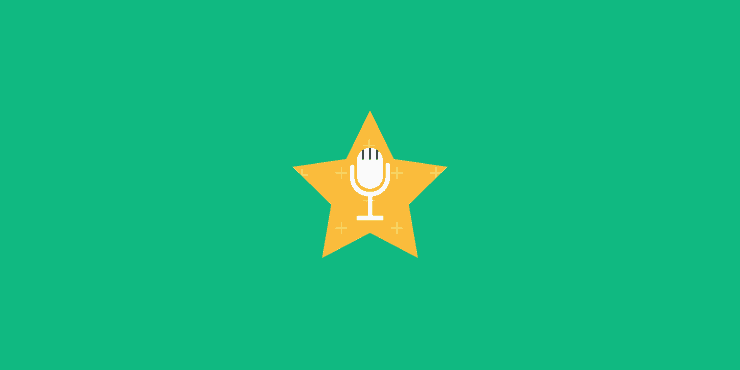Last updated on 8th March 2024
Whether you’re just starting out or looking to improve an existing podcast, this podcast planning guide has got you covered. We’ll provide tips, templates, and tools to make podcast planning easy and efficient.
By the end, you’ll have a rock-solid plan to launch and manage your podcast. You’ll know how to ideate, organize content, and keep things on track week after week. Podcast planning doesn’t have to be painful – in fact, it can be fun!
Let’s get started mapping out your podcast empire. With some upfront planning and organisation, you can produce great episodes consistently. Your listeners will thank you!
Article Contents
Planning a podcast
You’ve probably heard it a million times over: ‘When you fail to plan, you plan to fail.’
Some of the most successful podcasts follow the flow of a very natural-sounding conversation. But that doesn’t mean that there was no planning involved.
Before you get started, you’ll need to plan out a couple of different aspects of your podcast to make sure you set yourself up for the best chance of success…
1. Find a niche
Before you even think about starting your own podcast, you need to research what’s already out there.
Listen to other podcasts in your industry, find out what’s popular, and see if there’s a gap in the market for you.
For example, if you work in the video game industry then you could just type ‘video games’ into a podcast app, listen to the most popular ones, and see if there’s anything missing that you could offer.
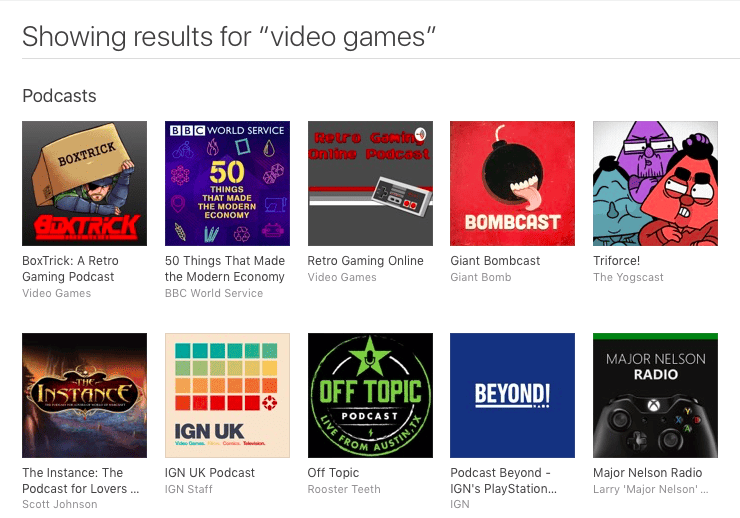
The same applies to any industry.
This research is important for striking the balance between a popular subject and an over-saturated one.
After gathering some ideas, you can do even further research to make sure you’re going down the right path. After all, a podcast is a huge investment of time and money so you need to be sure you’re putting your best foot forward!
By using a survey software like SurveyMonkey, you can target real podcast listeners and ask them what they like to listen to.
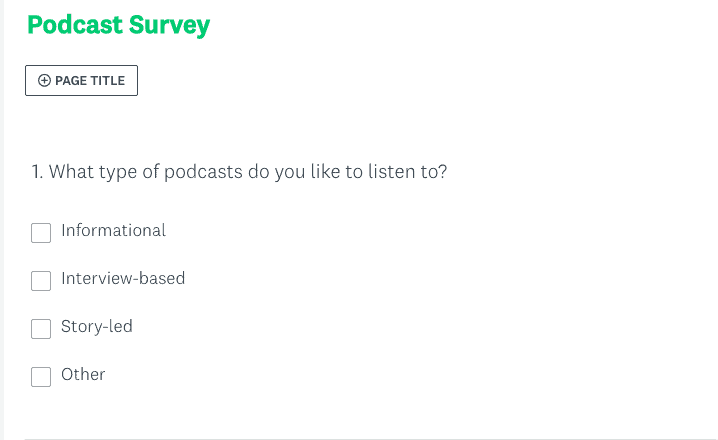
With SurveyMonkey, you can build your own custom survey in minutes and then push it out to your ideal listeners using the SurveyMonkey Audience tool.
You can target respondents by demographics such as age, gender, interests, and more. And there is even an option to specifically target podcast users:
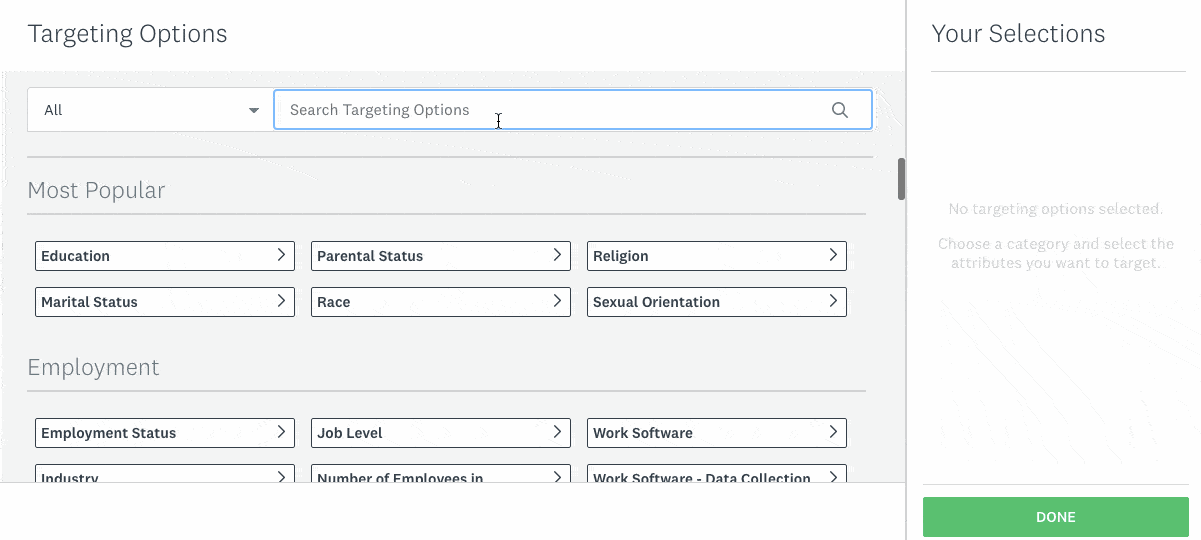
It’s important to note that, while it’s free to get started and play around with SurveyMonkey, it’s not free to push your survey out to targeted respondents. There is a cost of usually a couple of dollars or pounds per respondent (depending on how detailed your target audience is).
2. Episode format
After finding a topic to focus on, you need to consider your episode format. There are many different ways to format your podcast.
You need to consider things like:
– Number of hosts
– Structure (e.g. interview-style, story-based etc.)
This can also be determined through market research. You could create surveys around episode length and the ideal number of hosts, and also pair that with the evidence you find from current popular podcasts in your niche.
3. Music and art creation
Once you’ve got the practical stuff out of the way, it’s time to move onto the bells and whistles.
Eye-catching cover art will encourage new listeners to click on your podcast, and an amazing soundtrack will get them excited to listen to each new episode.
It’s easy to find designers on platforms like Dribbble or Fiverr. You can list a job opening and let designers come to you, or you can search through their work and approach a designer you feel would be right for the job.
Just type a keyword into the search bar, and scroll through:
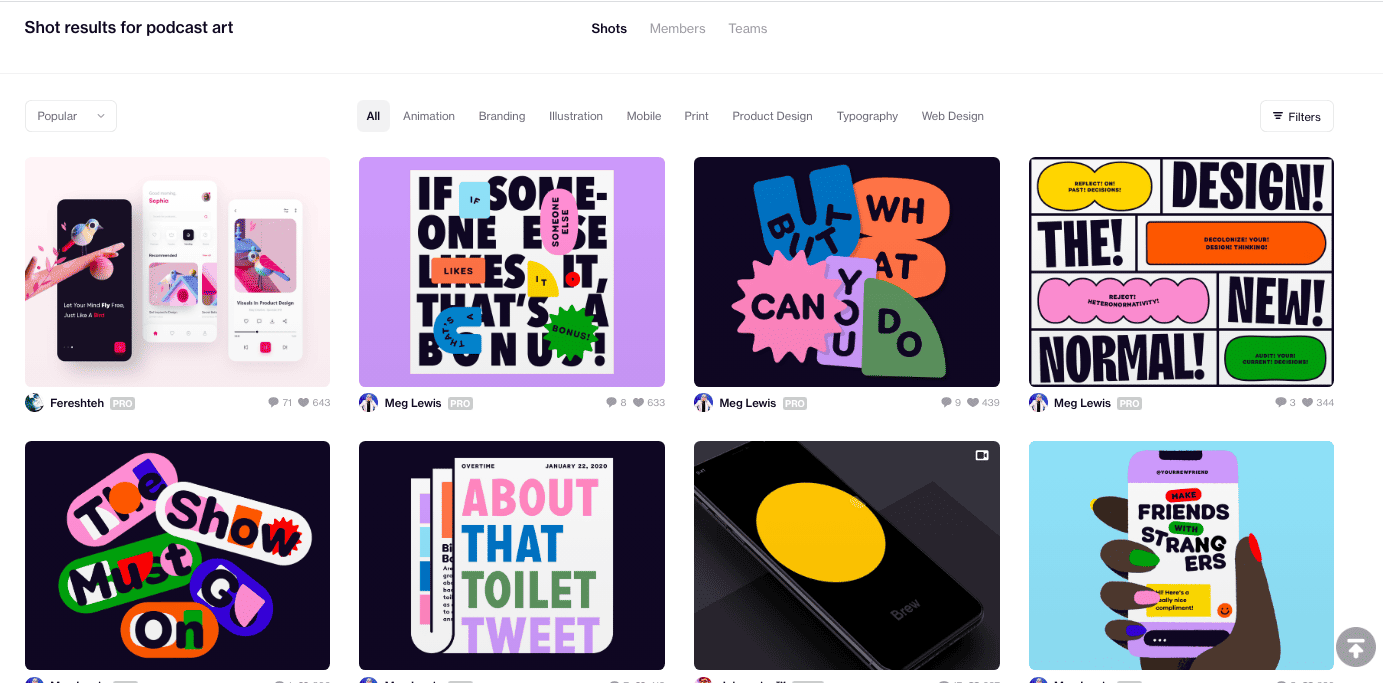
You can do a similar thing when looking for music. Sites like AudioJungle feature tons of royalty-free music tracks that can be yours for a one-off fee.
There is a category called ‘Logo Idents’ that’s great for short intros and outros:
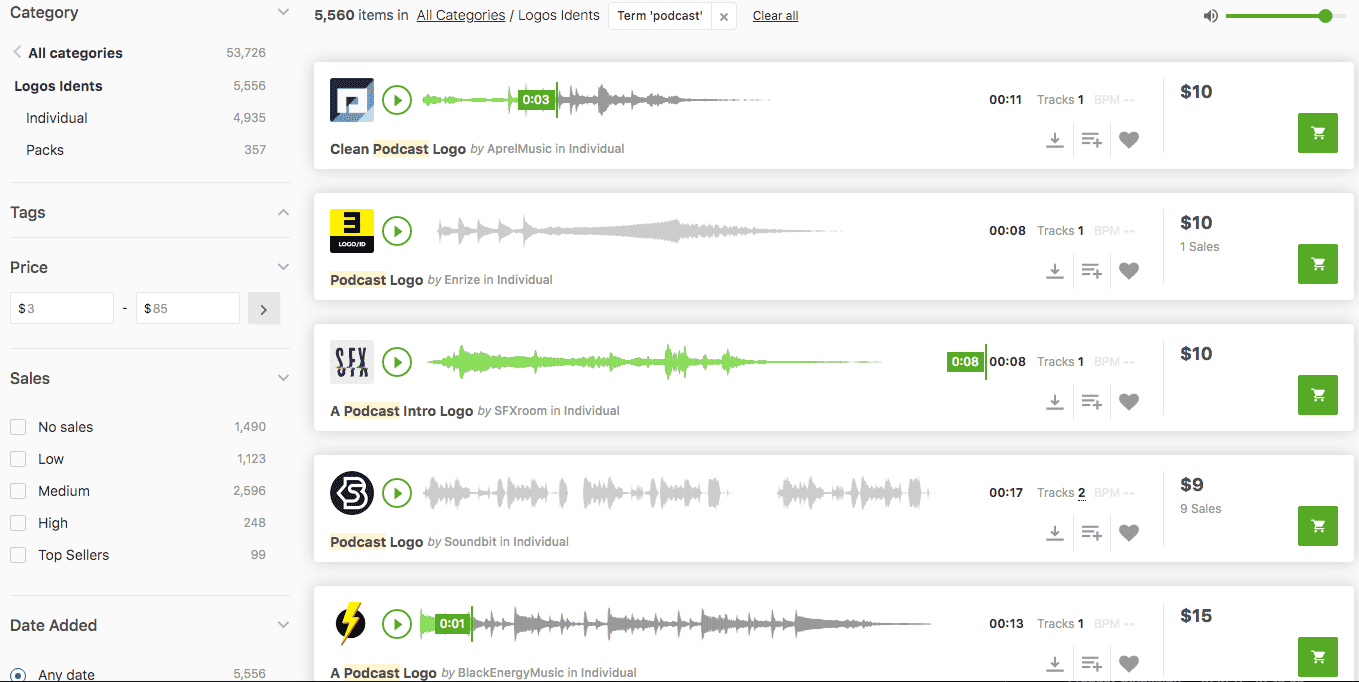
4. Equipment you’ll need
Last, but certainly not least, you’ll need some equipment.
The obvious things to put on your shopping list are:
– Headphones (so you can hear yourself and guests better)
– Editing software
The great thing about podcasting is that it can be as simple or as complicated as you make it. Of course, for better sound quality you can add more technical equipment to that list, like a pop filter (for noise protection) and soundproofing for the room you’re recording in.
When it comes to microphones and headphones, big retailers like Amazon should be able to tell you which is best for your budget.
For editing software, there are a couple of favourites among podcasters:
Audacity (for those on a budget – it’s completely free)
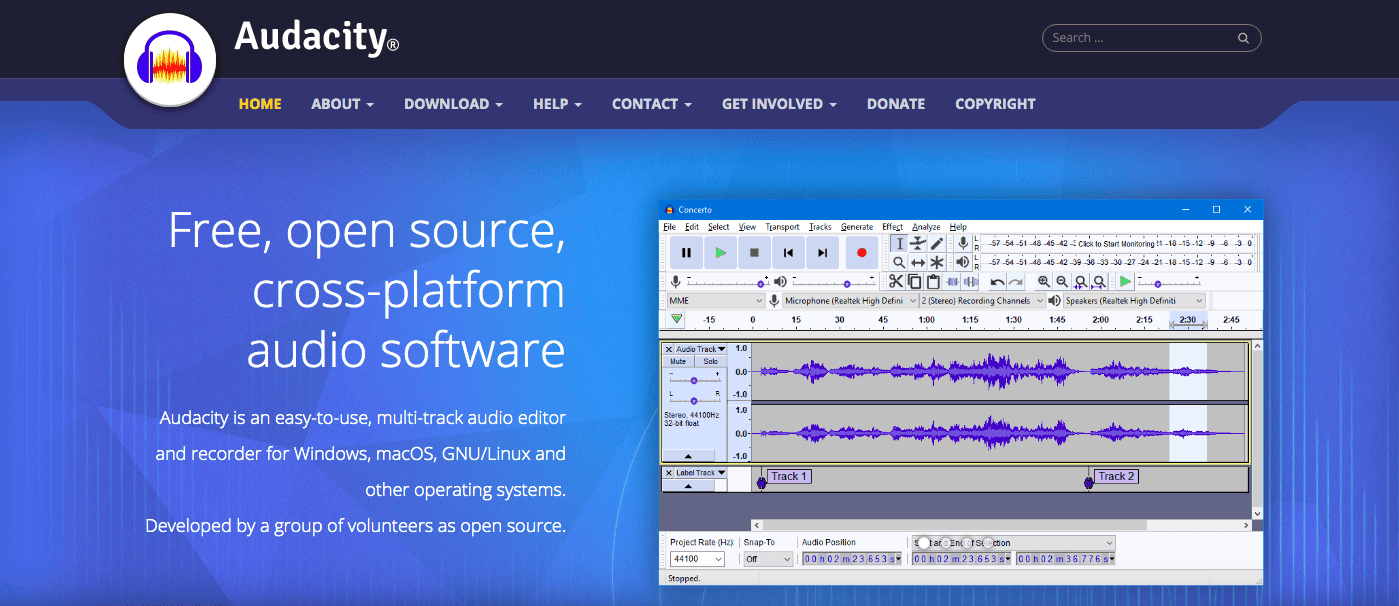
Descript (great for adding transcriptions – more on that later)

Adobe Audition (pricey, but worth it if you’re investing a lot of time into podcasting)

Day-to-day project management
To keep your podcast running along smoothly, you’ll need to plan and manage each episode in advance.
This can seem a little daunting at first – especially when you have to juggle booking guests, researching, recording, editing, and promoting – but a good project management tool should make this a lot easier.
At Project.co we have a free podcast planning template that includes everything you need to keep a tight production schedule.
The Tasks feature helps you to keep track of all of your episodes. You can organise tasks in a List view, a Calendar view, or with a Kanban view:

The Kanban feature allows you to break your tasks up into different stages, for example ‘Ready to Record’ and ‘Needs Editing’. And you can easily move your episodes along the funnel by dragging them and dropping them into the correct column.
With the People feature, you can add your guests and co-hosts to your projects, and chat to them via the Discussions tab.
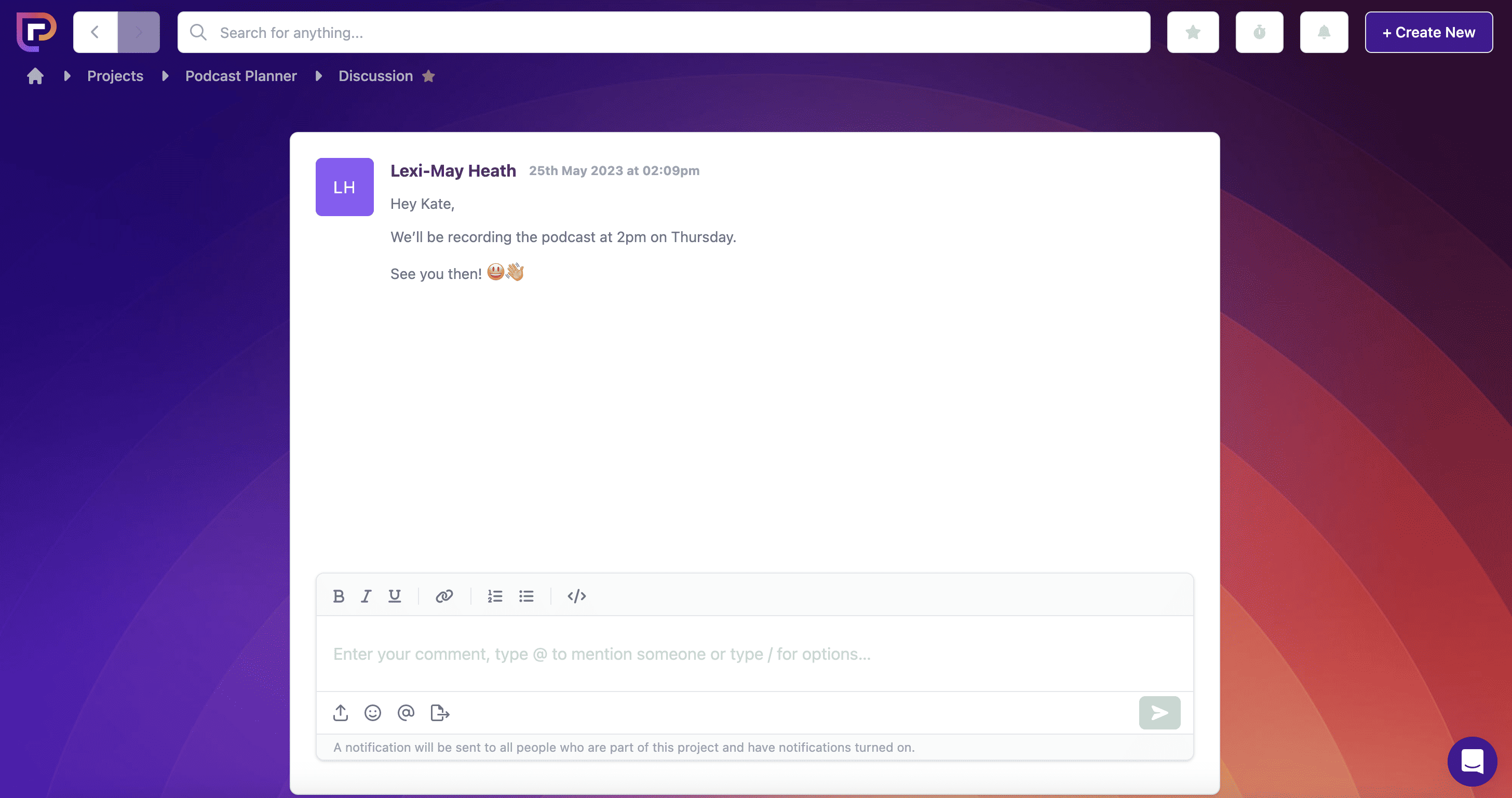
This allows you to keep all podcast-specific communication central, so that you never need to wade through tons of emails to find the information you’re looking for.
With each project you also have the ability to share documents with your guests and co-hosts.
The Embeds feature can be used to share internal documents that can be collaborated on, such as Show Notes.
And the Files feature is great for sharing information with guests, such as a list of questions that you’ll be asking.
The Notes section, meanwhile, would be a great place to keep track of important information.

To run a successful podcast you need to spin lots of different plates at once, and a project management tool can help you keep hold of all of these plates – so that you don’t break any!
Launching your podcast
Okay, it’s time for things to get exciting! Once you’ve recorded an episode of your podcast (or a couple, if you want to get ahead of your schedule) it’s time to prepare for your launch.
The first thing you need to do is find a hosting site that you can upload your podcast to. If you’re already invested in video marketing, then you’ll already know a little bit about finding hosts.
There’s an overwhelming number of hosts to choose from, and it’s up to you to find the one that best suits your requirements. To help you whittle it down, here’s a great objective list post: 31 Best Podcast Hosting Sites.
Submitting to Apple Podcasts
After finding a host and uploading your episode(s), you’ll need to submit your show to Apple Podcasts. If you’re an avid podcast listener then you’ll know how important it is for your show to be on Apple Podcasts. In fact, most shows are advertised with a variation of the following phrase:
This is because the majority of listeners (52%) are using Apple Podcasts to listen to their favourite shows, with Spotify (19%) coming next, followed by Stitcher (4.6%), and a jumble of other platforms (21%).
Luckily, it isn’t too difficult to submit your show to Apple Podcasts. You’ll just need to create an Apple ID (if you don’t have one already) and make sure that your podcast meets the requirements.
Typically, your podcast host will have made sure you’ve covered all of these requirements. But here is a full list, just in case: Apple Podcast Requirements.
From there, you’ll need to submit your RSS feed. This can usually be found through your host, so the location of this will depend on the service you are using.
After submitting your RSS feed to Apple Podcasts, all you need to do is wait for approval. This can take anywhere from a couple of hours to a couple of weeks – something to keep in mind when you’re promoting your podcast.
Promoting your podcast
The final piece of the puzzle when it comes to launching your podcast is promotion. As with any marketing content, promotion is key.
When that first episode is out, be sure to promote your podcast anywhere and everywhere that you can: social media, email newsletters, blogs – the more eyes (and ears!) you can hit, the better!
This is super important because Apple (and many other podcast platforms) show trending podcasts based on downloads and likes, so if you can get into this section you’ll see a huge spike in downloads.
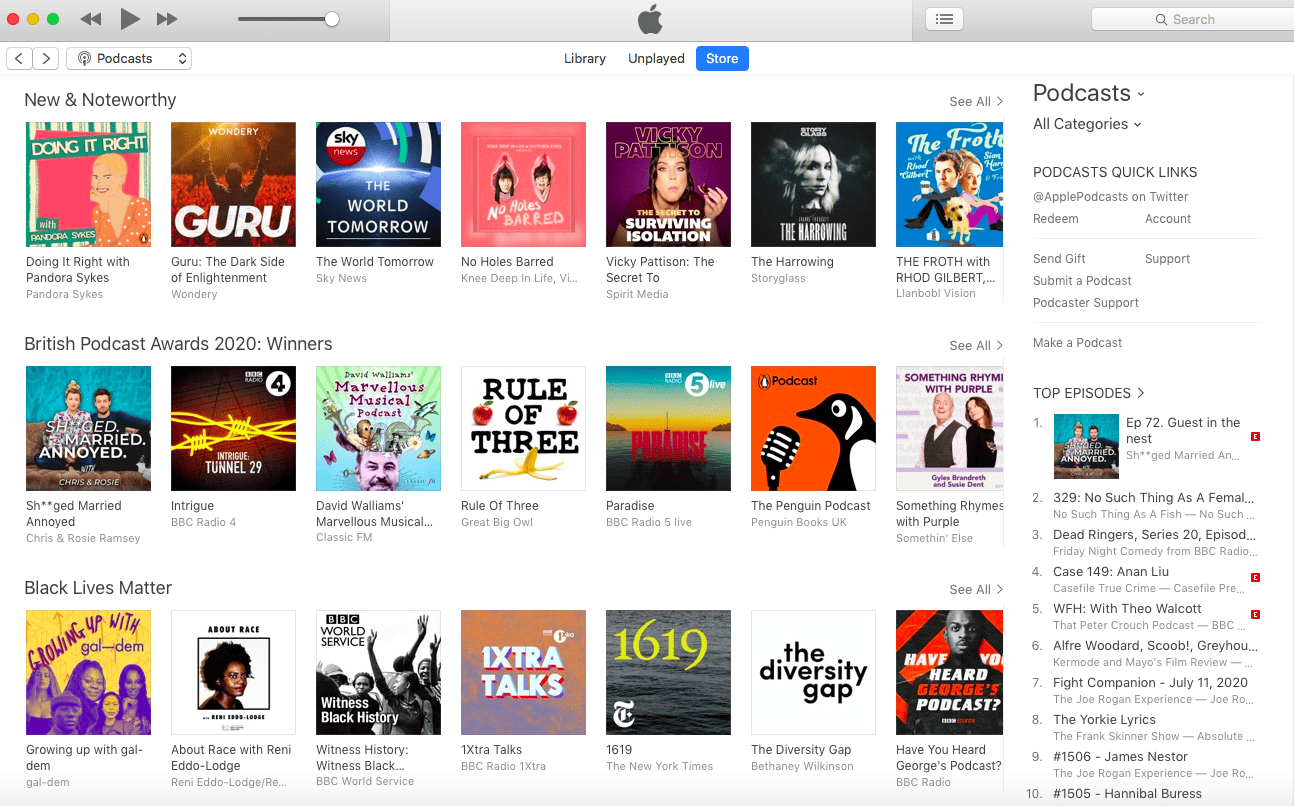
Podcasting: 5 tips for success
1. Use a project management tool
Project management is so incredibly important for the success of any podcast. In order to keep a stream of well-made episodes coming out on a regular basis, you need to plan everything out in advance – and a project management tool can help you do that.
2. Test what works
Don’t expect to strike gold on the first try – instead, ask your listeners for their feedback. Social media is a great platform for communicating with your audience and finding out what works and what doesn’t.
Why not create polls that ask listeners important questions about the show?
Here are some examples:
– What’s the best time to release a show?
– What’s your preferred episode length?
– What are your likes/dislikes?
Then, when you find a method that works – stick with it. If you find your listeners dwindling in the future then you can always go back to the drawing board and make some changes. You are in control!
3. Get transcriptions
By transcribing every episode of your podcast, you give search engines something to ‘read’ so that they can rank your web page for certain keywords – improving your SEO and giving your podcast more visibility online.
But don’t worry, you don’t need to transcribe the episodes yourself! There are some handy tools that can do it for you.
Descript, the audio editing software mentioned above, also has a transcription tool. And Scribie is another popular choice among podcasters, as is Rev.
4. Focus on sound quality
You could have the most important information to share, but if your audio quality is terrible then no one is going to listen!
Make sure you regularly test your audio and update your equipment. If your listenership grows then consider investing more money into better microphones and soundproofing.
5. Build a community
The best podcasts are those that build a community with their listeners. If you want people to keep coming back and listening to your show then you need to interact with them.
Chat to them on social media:

Give them shoutouts on the show and ask for their opinion.
This kind of interaction and community-building is not only important for growing the popularity of your podcast, but it can also help you monetise it.
When listeners feel like part of a community, they’re more likely to buy merchandise that represents that community:

Final Thoughts
Getting started with podcasting can seem like a daunting task, but once you break it down into manageable chunks it gets easier!
With our podcast planning template, you’ll have everything you need to get off to a running start – and it’s completely free!

